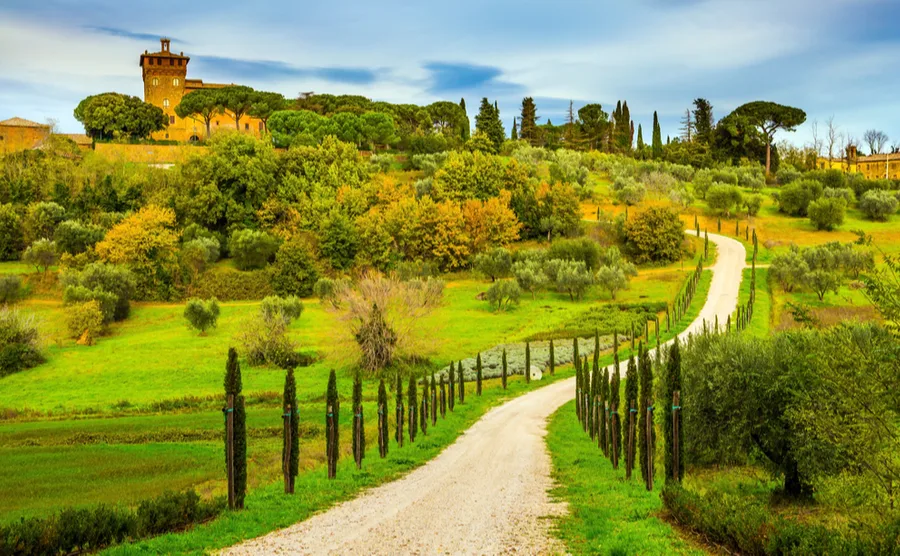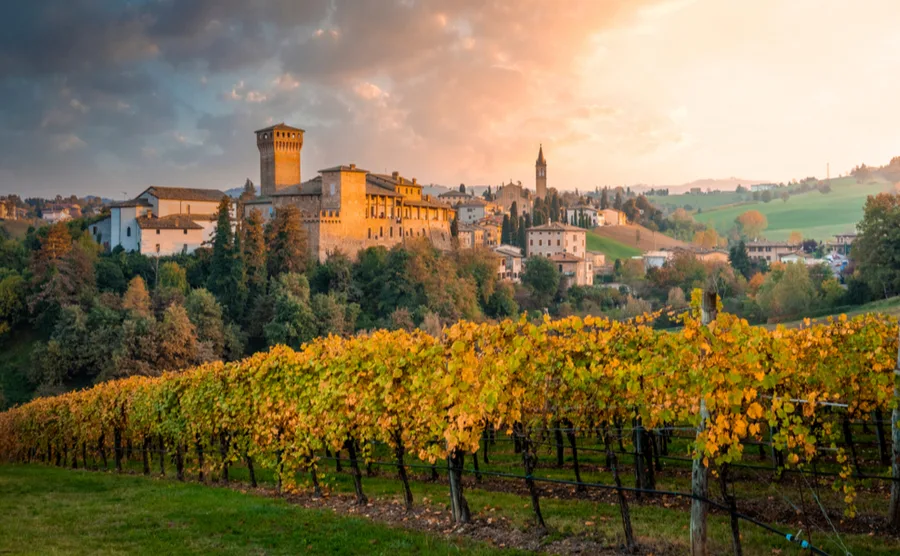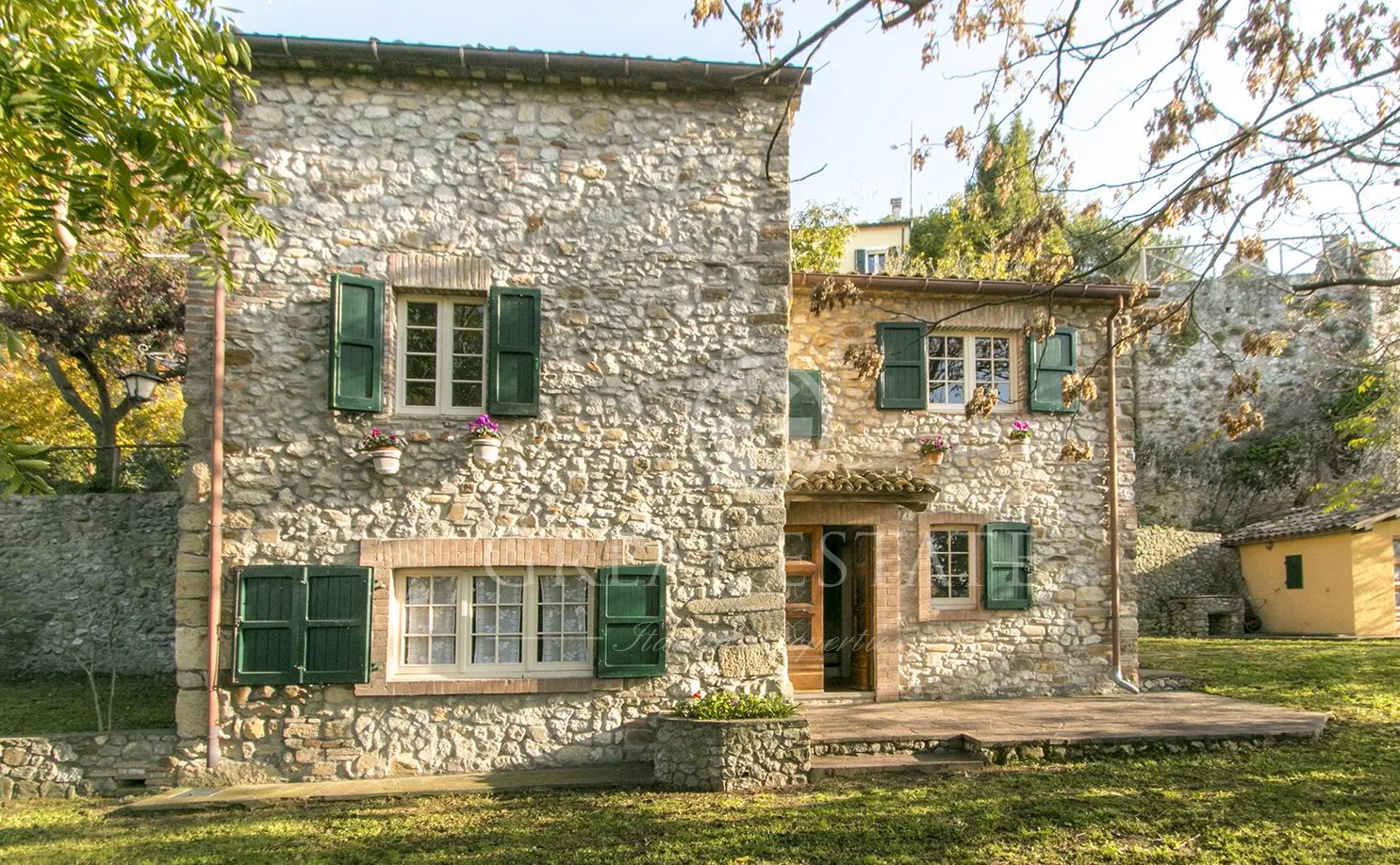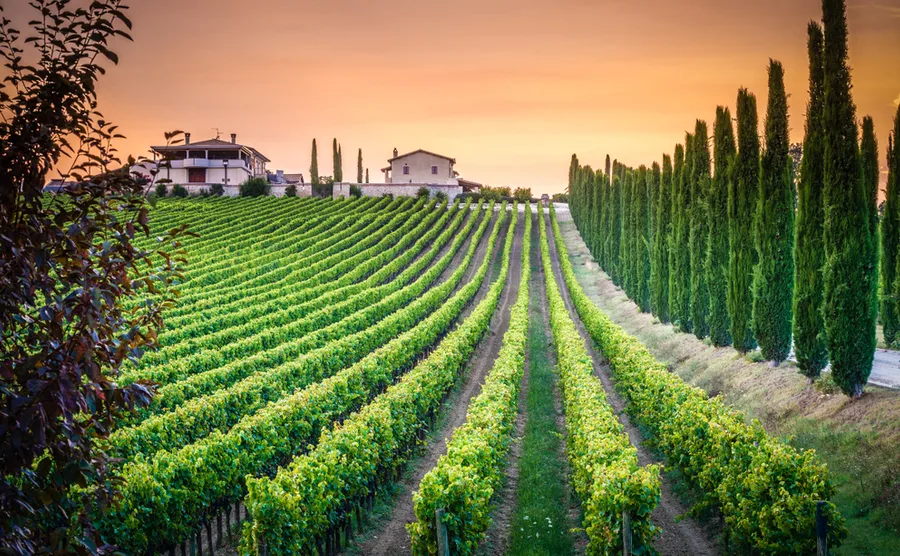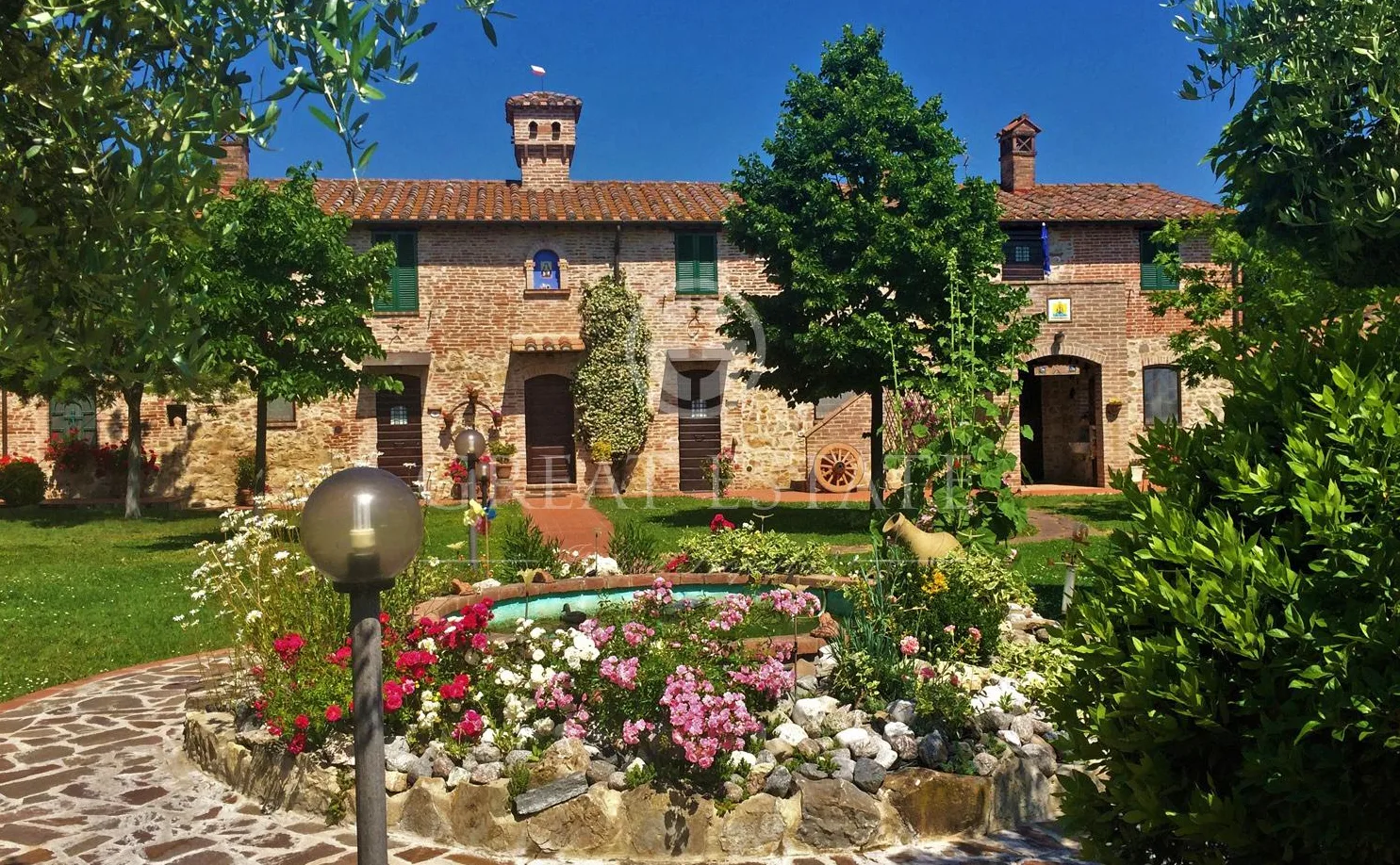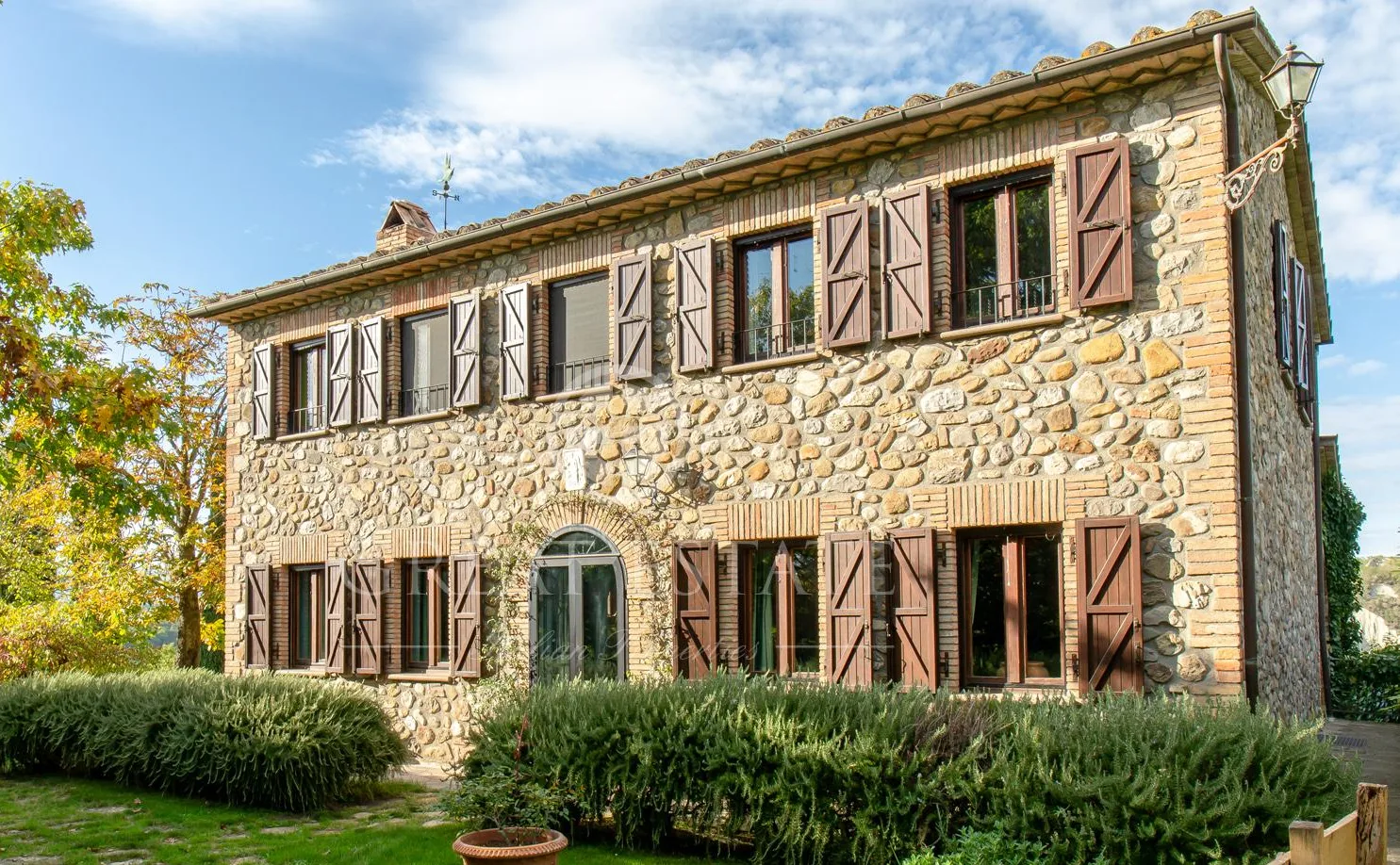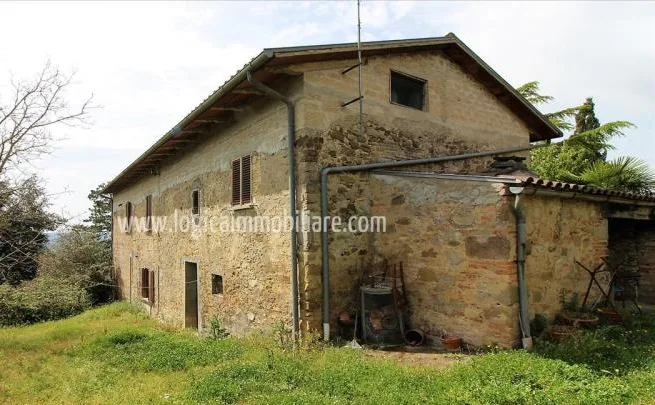A stone farmhouse surrounded by beautiful Italian countryside is the dream of many house buyers coming to Italy. House hunting is a great excuse to go on an Italian road trip around the rolling hills, mountains and valleys of this beautiful country.
On a road trip through the Italian countryside, you’ll discover stunning landscapes, and farms growing everything from almonds to grapes. A visit to a farm shop or farm tour is a great introduction to the lovely people that choose to devote their lives to growing produce. Most Italians appreciate their hard work and dedication, and will buy local produce whenever they can.
Find homes in Italy via our property portal.
Local produce
In farm houses and villages, you will find restaurants, that only use fresh seasonal vegetables, and cook dishes that reflect what’s grown and produced locally. Specialities might include local products such as cheese, sausages, pasta and delicious cakes. When you have your own farmhouse you will be able to enjoy visiting the local markets and farm shops, and cook in your own kitchen. Even the simplest ingredients taste amazing when grown locally and ripened in the sun.
Where to stay
If you don’t want to be tied to one area, then I recommend staying at a few Agritourism farms. An “Agriturismo” is a working farm that also offers visitor accommodation. If you go outside of the holiday seasons, then it’ll be easier to find single night accommodation and travel from place to place. Alternatively, you could rent a countryside property or village apartment in a central location with good road links to the areas you want to visit.
Where to find stone farmhouses
Tuscany is the first place that comes to mind when looking for a stone farmhouse in Italy, and the region definitely has a lot to offer in this regard. However, the neighbouring regions of Emilia-Romagna and Umbria also have outstanding scenery, quality food products and stone farmhouses that are full of warmth and character. Being close to each other, it is easy to take a road trip through all three.
Tuscany Road trip
Most people travelling to Tuscany fly in to Pisa airport and hire a car (Although there is also an airport at Florence.) If you head out towards the mountains above Lucca you will find some of the cheapest properties in Tuscany, that make great holiday homes. However, it is the geographical area known as Chianti, between Florence and Siena that is popular for farm stay holidays.
If you are looking at farm houses in the south east of the region below Siena and Arezzo, Perugia airport is not far across the border in Umbria. In fact, this is an excellent area to find farmhouses. The Val d’Orcia has some wonderful countryside and charming medieval villages, recognised by UNESCO.
We have all seen photos of the famous cypresses of the Val d’Orcia leading to a stone farmhouse. These are actually near San Quirico d’Orcia. You can find gorgeous farm houses for sale around Castiglione d’Orcia, Cortona, Montepulciano and Arezzo.
What are Tuscany’s farms known for?
Tuscan farms mainly grow wheat, olives, grapes, fruit and vegetables. But you will also come across fields of sunflowers or rapeseed, along side beehives. Farmers also raise cattle, pigs and chickens. The best known area for vineyards is Chianti, and in May 2023 it was announced that the “farm-villas” in Chianti have been officially included in the Italian list of candidates for UNESCO World Heritage status.
In Tuscany its all about eating fresh vegetables when they are in season and meat from animals that have grazed in the local countryside. Meat lovers will be astounded by the size of a Bistecca di Fiorentina, and the flavour of the salami. The simplest of dishes seems to have so much more flavour here, even tomatoes on bread with a drizzle of olive oil.
Tuscany Stone farmhouse
Each village and town has a unique identity due to the architectural influence and local construction materials available. The foot-hills of the Apennines, Florence, Pistoia, Arezzo and Cortona are known for their use of sandstone on buildings, whereas quartzites were widely used in Pisa and Lucca. Then, due to outcrops of clay near Siena and San Gimignanoare, red bricks began to be more widely used.
Moving south of Florence, there is another type of natural stone that influenced the design of Tuscan villas. Travertine is a type of stone that first became popular in the 1400’s. It is a form of limestone deposited by mineral springs, especially hot springs. Its colour can be white, cream or tan.
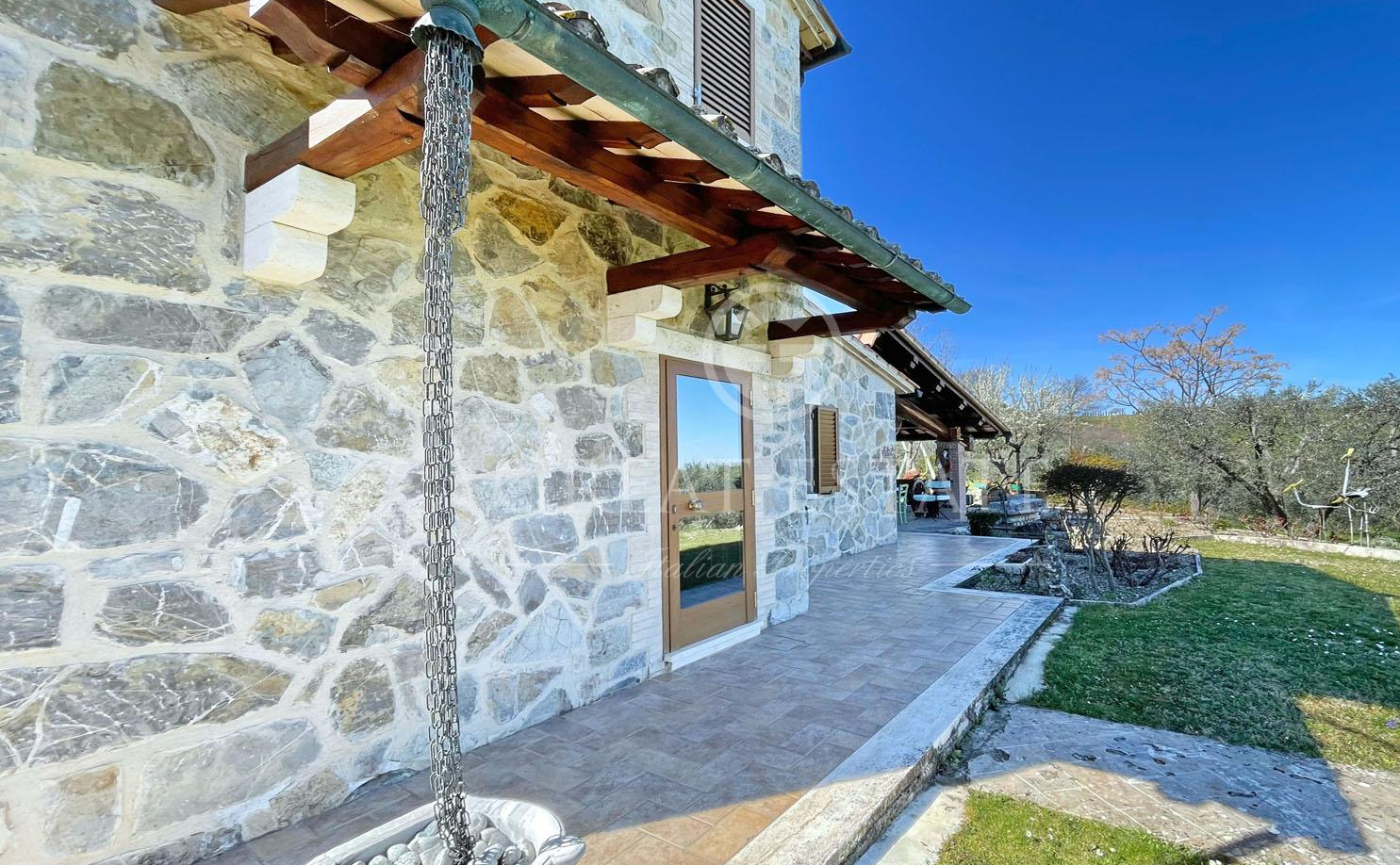
A wonderful farmhouse in Castiglione d’Orcia, Tuscany, €690,000. To see more of this property, click on the picture.
Emilia-Romagna road trip
The region above Tuscany is Emilia-Romagna, which extends from the Apennines to the River Po in the north. There are direct flights from London airports to Rimini and the regions capital Bologna. When looking at farmhouses on the far west of the region, airports at Genoa and Milan may also be an option. From Bologna you can drive to Florence in about one hour fifty minutes.
The main motorway runs straight across the centre of the region, from Piacenza, past Parma, Regio Amelia, Modena, Bologna, Forli and finally arriving at the Rimini coast. Many of the farmhouses for sale are in the countryside south of these towns and on the edge of the Apennine National Park.
What are Emilia-Romagna’s farms known for?
Emilia-Romagna is one of Italy’s leading agricultural regions. It boasts one million hectares of farmland producing wheat, corn (maize), sugar beet, meat, milk, vegetables and fruit. While vegetables and fruit are mainly grown in the lowlands, there are also vineyards on the Apennine slopes. Of course, where you find great cheese you will also find cows, and the local farmers are very proud of their white Modenese breed.
If some of the names of the towns ring a bell, it’s probably because of the famous food products that come from Emilia-Romagna. Parmesan cheese (Parmigiano Reggiano) is from Parma and Reggio Emilia, Balsamic vinegar from Modena, and everyone has heard of Parma ham and Grana Padano cheese. All top quality products produced using traditional methods. A good percentage are organically farmed and it is encouraging to see the number of young farmers in the region.
Emilia-Romagna Farmhouse
A traditional farmhouse of the region tends to be built of limestone, with wooden windows and shutters. Shutters tend to be either natural wood or painted in brown or green, to blend in with the surroundings. The wooden roof beams support a terracotta tiled roof. The farm houses on higher ground have roofs that overhang a little more, rather like a chalet.
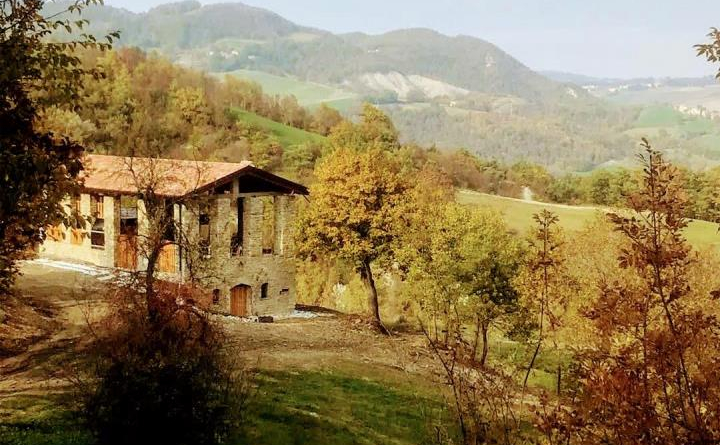
Original stone barn partially converted (change-of-use registered) into a dwelling house on three floors in Romagnano, Emilia Romagna for €160,000.
Umbria Road Trip
Umbria is in central Italy, below Tuscany. Roads fan out from the capital city, Perugia, where you will also find the airport. Perugia is less than an hour drive from Cortona in Tuscany, therefore you could easily include part of Tuscany in your road trip. Either side of the border and around Taormina Lake there are some beautiful villages and stunning landscapes.
Umbertide is less than 35 minutes drive from the airport, as is Todi, Pasignano sul Trasimeno, Corciano and Callazzone. If you do a full circuit of Trasimeno Lake, you also can’t miss Castiglione del Lago. Which isn’t far from Ed Sheeran’s house.
There are some stunning large farmhouses in this area, such as this one which includes a main apartment, and four smaller ones, a swimming pool and panoramic views of the lake.
The countryside around Orvieto is also popular, as it is such a beautiful town to visit. It’s about one hour twelve minutes from Perugia airport and a hour and a half from airports in Rome.
What are Umbria’s farms known for?
Umbria has many olive groves producing quality oils. The main production areas for olive oil are in the foothills of the Apennines, the Colli Martani (South of Perugia) and the hills around Amelia, Lake Trasimeno and Orvieto. Alongside Tuscany, Piedmont and the Marche, Umbria is among the main truffle producing regions of Italy. Mostly the black variety, but also some prized white truffles.
Other Umbrian specialities include the colfiorito red potato, Trevi black celery, canara onions, and cascia saffron. They also produce excellent cured meats and several cheeses, such as caciotta and black truffle cheese. You will also see farms growing sunflowers, sugar beet, cereal and grape vines. Pig breeding is also quite common here.
The landscape of Umbria never ceases to amaze, with waterfalls, lakes, river parks, and forests that change colour with the seasons. This is truly the “Green heart of Italy”, yet in May and July a sight not to be missed is the flower plateaus of the Umbro-Marchigiano Apennine. Poppies, cornflowers, daisies and lentils create a rainbow spread before you.
Umbria farmhouse
The stone farmhouses of Umbria in the past, housed the family upstairs and the animals downstairs. The buildings have thick walls constructed with local stone. As with Tuscany and Emilia-Romagna they have the traditional terracota tiled roof and in some houses there is brick flooring.
Benefits of a stone farmhouse
Natural stone performs well both inside and out, and is suitable for all weather conditions. Exposed stone walls need next to no maintenance. Therefore you won’t need to paint the house every spring. The thick walls also offer good protection and soundproofing, as well as conveying an appearance of strength and character. It can also be very reassuring to know that your walls are fireproof.
More than anything, stone houses look beautiful and compliment their surroundings, especially in a natural landscape. Every nail where once hung tomatoes and every fireplace that once cooked the families meals, has a story to tell. Stone houses are full of character and feel homely, and should be cherished for future generations.


